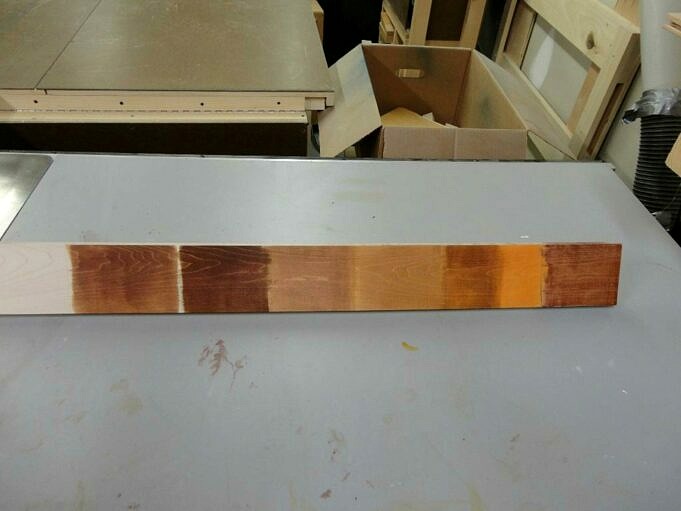My go-to stain for furniture finish is not a stain at all. It’s a dye. What is the difference? What is the difference? A store-bought stain contains pigment and a binder that glues that pigment to furniture. The solvent suspends the pigment in water. The stain will sit on top of the work and cover the wood grain, creating what is commonly known as a “muddy look”.
Dye is quite different. Dye is composed of microscopic crystals which dissolve in solvents. The dye penetrates wood deeper than stains because it travels with the solvent. That adds depth to your finish. Aniline dye is my favorite way to add color to furniture without hiding the surface.
But what solvent (alcohol, oil or water) should you use in conjunction with the dye? Thats an easy call , water. Yes, water is a solvent and water-based aniline dye is what Ive used for my entire woodworking career.
Here are the reasons. Water is easy to find for most of us. You dont have to drive to the store to make a purchase. You simply walk into your kitchen , or use an outside hose bib if the spouse isnt fond of sawdust on the kitchen floor (I know of what I speak!). Water-based aniline dye is the least likely aniline dye to fade in sunlight. It does fade, but it fades at a much slower rate than either the alcohol- or oil-based dyes. You do know by now that anything placed in direct sunlight is going to fade.
Additionally, water-based dye is easy to use. Its almost error proof. Compared to alcohol-based dye that dries so quickly, the water-based mixture precludes lap marks, especially if you apply the dyes as I do. Oil-based dyes can take a while to dry, so you might lose a few days sitting in the shop. Water-based dyes dry in four hours, whereas oil-based dyes take around four hours. I have used a handheld hairdryer to speed up drying of multiple pieces. After the process is completed, who needs oily rags? Yes, water on wood does cause the grain to rise, but its so easy to knock the raised grain down with #320-grit sandpaper, its a non-issue.
Topcoat compatibility is the most important reason to brush your finish. If you use an oil-based dye then brush on a coat of oil or oil-based finish, theres a chance, a good chance, that your dye will run or move as the brush strikes the surface. Ditto if youre using alcohol-based dye and applying a coat of shellac. But when water-based dye is used, no oil or alcohol product is going to affect the dye job. This is another point in the simple-to-use column.
For more information about finishing your project with aniline dye and how to make your furnitures finish stand out, pick up the newest DVD Finishes That Pop from the WoodWorkers Bookshop (woodworkersbookshop.com). The DVD will be available for pre-order starting in September.



